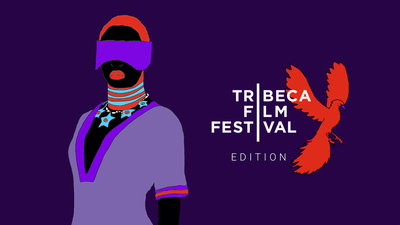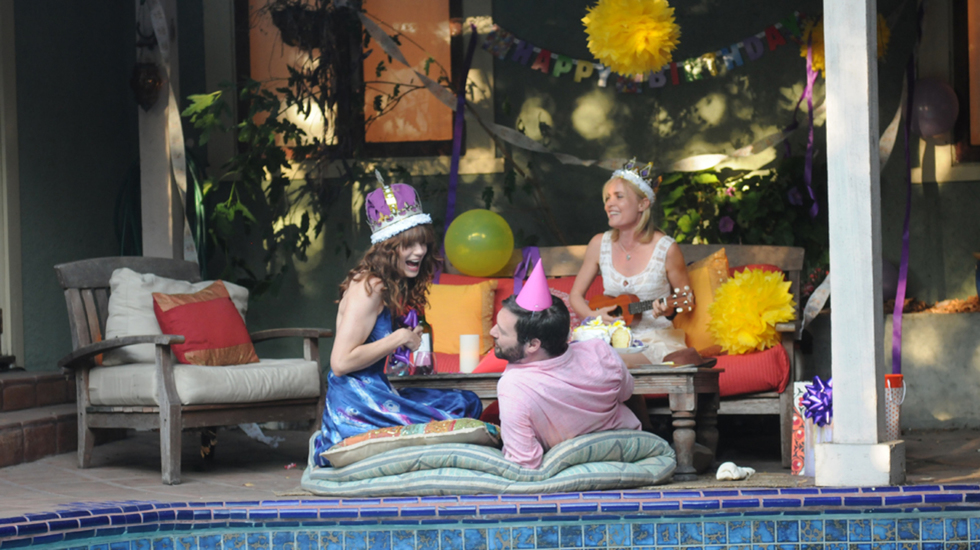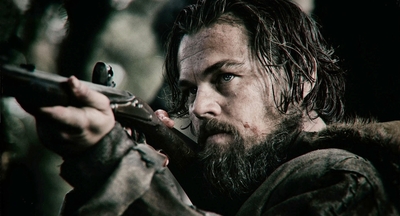
BY KAREN KEMMERLE |
Radha Mitchell on ‘Expecting’ and the Importance of Telling Stories for Female Audiences
Radha Mitchell celebrates a return to her indie roots in Jessie McCormack’s ‘Expecting,’ a comedy about friendship and dealing with life’s unpredicted bumps in the road.

Perhaps best known to mainstream audiences for her work in the sci-fi and horror genres (Pitch Black and Silent Hill), Radha Mitchell possesses a filmography rich in art house fare like High Art, Mozart and the Whale, and Woody Allen’s Melinda and Melinda, in which she played the title role. Her latest film, Expecting, marks Mitchell’s return to indie form, as she plays Lizzie, a married women, who after years of trying to have a baby is shocked when her best friend, Andie, finds herself pregnant after a one-night stand and offers to give her the child.
An appealing mix of comedy and drama, Expecting is a candid look at the effects of complicated and unexpected events on relationships. We talk to Mitchell about how she came to the project, female friendships as portrayed on-screen, and embracing the age of digital distribution.
Tribeca: In recent years, your filmography and television work have included action-heavy fare like The Crazies, Surrogates and Black Widow. Was it nice to return to a smaller character piece like Expecting? Had you been looking for a project like this for a while?
Radha Mitchell: I’m always looking for a project like this. It was really special to do a little girly movie directed by a woman. The themes are very female-centric and were incredibly relatable for me. Plus, it was fun to do something relativity light for a change and in the city where I’m living.
When I first started making films, my first project was an independent film made in America. In fact, I remember saying to my agent, “What I want to do is independent films. I don’t want to do anything else.” That’s how it began for me. I’ve done a lot of films since, but the spirit of independent films is what attracted me to acting in the first place.

Tribeca: With the exception of Nicole Holofcener’s recent Enough Said, I can’t remember the last time I saw a female friendship explored so candidly on screen. How important is it for female stories to be told? Why can they only be told in the independent film world?
RM: Perhaps there is a misconception that there isn’t a female audience? Not true! Girls love watching movies, and it’s really great for them to see their own stories represented or retold in terms that affirm their sense of identity. And in general I believe that there’s always an audience for good films even if they focus on feminine issues.
Why are female stories happening in the independent film world? I guess because it provides a space for filmmakers to explore and experiment and work outside of convention. Why that is not happening in the studio world is another issue. However, you do see more women-centered stories on television. There’s a bounty of powerful female leads right now. So, I don’t think the situation is dire, but it does still feel exciting when you see a little film that explores women-centered stories.
Tribeca: What were your first reactions to the script?
RM: I was more drawn to the script than to either of the characters in particular. I just liked the dynamic between the two women. I remember talking to the director, Jessie McCormack, as we were waiting for people to sign on and she mentioned she really wanted to work with Michelle Monahgan. I knew someone who knew Michelle and so we got her in to read the script, and I think she had the same feeling. She knew this could be a cool project to do with another cool actress.
Michelle recognized that there was something unique about the chemistry between the two characters. The script was interesting to her the same way it was interesting to me. The film allowed us to explore this beautiful friendship and see how deep we could go. It wasn’t a surprise that Jessie assembled such a great cast for the movie.
I think if you’re not approaching someone with a competitive spirit, you’re immediately going to find a friendship.
Tribeca: Michelle Monaghan, who plays Lizzie’s best friend Andie, is indeed a great on-screen partner for you. Were you able to rehearse before production started? How did you create that bond between the two of you?
Radha Mitchell: I don’t think we worked too hard on forming a bond—it was already there. Plus, she’s married to an Australian so that’s a wonderful shorthand right there. [laughs] Aside from that, I think if you’re not approaching someone with a competitive spirit, you’re immediately going to find a friendship. You’re coming into something together and there is this implicit bond already there. Plus, she’s just naturally very warm and easy to connect with, so it just felt really organic.
Tribeca: What drew you to the character of Lizzie? Did you feel like her choice between marriage and having a child was forced?
RM: I think she had this biological sense of urgency and this sense of being unfulfilled. In the process of Abbie’s pregnancy and the pressure on her marriage, it becomes apparent to Lizzie and Peter too that they don’t want to do the same thing. I think Lizzie had to let go of the delusion that she was in a relationship that she wanted to be in.
She finds an exit when her friend gets pregnant and offers an opportunity for them to create the family that she’s always wanted and he doesn’t want it. The realization was quick; it could have taken ten years, but it ended up taking six months. The break up was probably a good thing.

Tribeca: Can you talk about collaborating with first time writer/director Jessie McCormack?
RM: Jessie was always pretty clear on her script so it was a little bit of playing with that. We always knew what we wanted to do, but we didn’t have a whole lot of time to explore the text. The collaboration was more in relation to who do we want to make the movie with – in terms of the cast and so on. We shot it very quickly together, and we focused on making the actions of the characters and the story as real as possible.
Tribeca: On an indie film like this, did you have the luxury of rehearsal?
RM: No. We had a reading and a bit of rehearsal each day, but then we had to shoot between sunrise and sunset so we would just sort of go, go, go, go, go.
Tribeca: How long was the actual production period?
RM: Four weeks or so. It was pretty fast, but thankfully, a lot of the movie takes place in one house so we didn’t really have to bounce back and forth between locations. My car was in the movie. Plus, we were all wearing our own clothes. People brought a lot of themselves to this movie.
Girls love watching movies, and it’s really great for them to see their own stories represented or retold in terms that affirm their sense of identity.
Tribeca: That’s pretty unique to be able to dress your character I would imagine.
RM: Yeah, it was fun! [laughs] Michelle and I just piled in a bunch of clothes, and if it worked for her character she’d wear it or if it worked for my character, I’d wear it. The budget was low, but between us and our stand-in, we had a lot of resources.
Tribeca: Expecting hit VOD and digital platforms over the holidays with a limited theatrical rollout to follow. Is a big wide release as important as it used to be for actors? Have you fully embraced the digital distribution age?
RM: I find it super exciting. I feel like we’re all still figuring out how it works. Is it better to release the movie in theaters and then put it on-demand or vice versa? People are still experimenting. I think potentially it’s great for filmmakers because they have access to an international audience and the movie can have a life as long as it is relevant. It’s all very cool.

